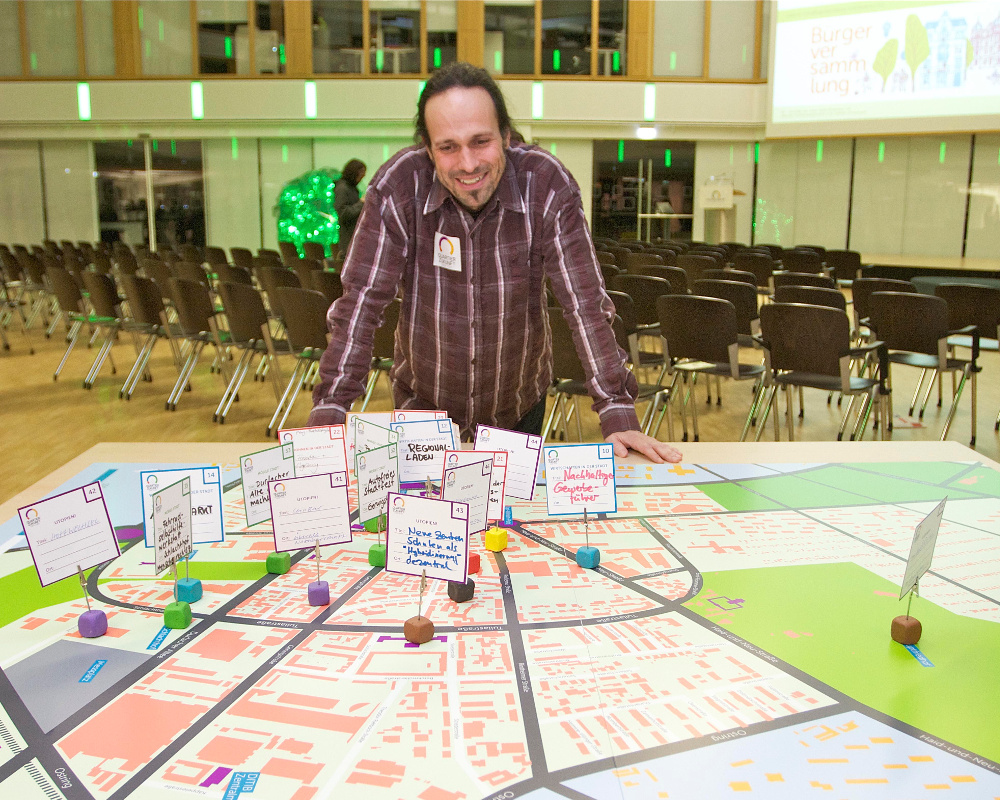District Future in Karlsruhe enters the implementation phase [12.02.2014]
The project wants to give impetus to a long-term, cautious development process towards more sustainability for the Oststadt of Karlsruhe. The intention is to establish structures which support this development even beyond the official term of the project. The active involvement of the Oststadt’s citizens is decisive for District Future.
Karlsruhe’s Oststadt offers ideal preconditions for the realization of the project aims: The urban district’s great variety of socio-cultural, functional as well as architectural aspects, a long-standing dense network of local stakeholders, the open-mindedness of the population, and the vicinity to KIT, all of which constitute an excellent breeding ground for new, sustainable urban development. These good prospects are a prerequisite for the District Future project to serve as a model – for other districts of Karlsruhe, but also for other, especially European, cities. The project area was chosen on the basis of a thorough scientific analysis.
The District Future project is also associated with the wish to bring science closer to the people – and vice versa. In February 2014, the project team will inform about the District Future project at a citizen meeting. Citizens will have the opportunity to ask their questions and address own ideas and activities.
2014 will also be the year to start with the first projects in the Oststadt. These could include activities in climate protection, recycle economy, health, education, energy supply, and projects such as autonomous living for the elderly, neighborhood kitchens, an evening market for the working population with organic and regional products, a science shop, fast lanes for cyclists, multi-generational living, sidewalks and road pavements equipped with sensors, a center for the subsequent use of empty urban space as well as street libraries. Some of the projects could also be located in the urban space adjacent to the Oststadt.
Information to the citizens
Initial talks with local stakeholders from industry, society, culture, and sports took place in recent month. Others will follow. At the end of November 2013, the approximately 7000 households in Karlsruhe’s Oststadt received an information letter explaining the project and presenting the kick-off events in the winter of 2013 and the spring of 2014. The dialog between the project team and the public is in the focus of all these events.
On February 9, 2014, the District Future team presented the project and looked forward to the citizen's questions, criticism, and suggestions. There have been workshops for participants to introduce their ideas about sustainable urban life. Possible schemes for cooperation have been explored in some kind of swap meet of ideas. A cultural program accompanied the citizen meeting.
Upcoming event:
Debate: Which kind of mobility do we need for the Oststadt’s future?
Thursday, March 20, 2014, 6-8 p.m.
alina café, Alter Schlachthof 39, 76131 Karlsruhe
This is an entertaining event for exchanging perspectives and visions – from scientific to personal – about future urban mobility, with invited participants and committed people from the region.
Further information:
- Project description District Future at the ITAS website
- http://quartierzukunft.de/en/


